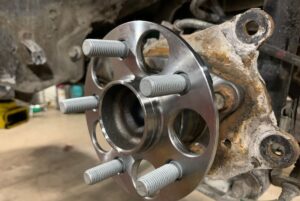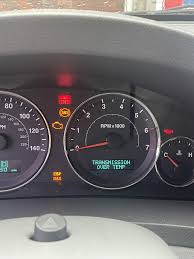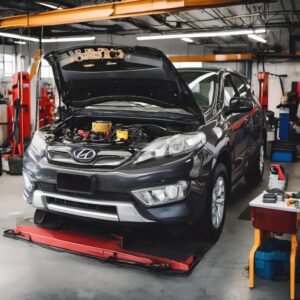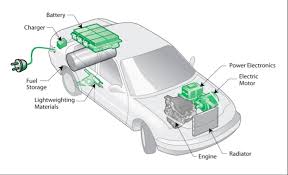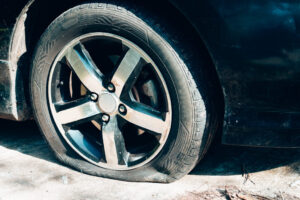What Does It Mean When All Your Check Engine Lights Come On?
Seeing a single check engine light (CEL) pop up on your dashboard can be nerve-wracking. But when multiple warning lights appear simultaneously, it can feel like a disaster waiting to happen. Your vehicle’s dashboard is designed to alert you to potential issues, and multiple warning lights can indicate anything from a simple sensor error to a serious mechanical problem.
In this post, we’ll explore the possible reasons why multiple dashboard lights might illuminate, what they could mean, and what steps you should take to diagnose and fix the issue.
Why Are Multiple Warning Lights Coming On?
When multiple warning lights illuminate at the same time, it typically means one of the following:
- A Major System Malfunction – A critical failure in your vehicle’s engine, transmission, or braking system could trigger multiple alerts.
- Electrical or Battery Issues – A weak or failing battery can cause multiple sensors to misfire, leading to multiple lights appearing.
- Faulty Sensors or Wiring Problems – If the sensors that monitor various systems fail or their wiring becomes damaged, your car’s computer may mistakenly trigger multiple warnings.
- Computer System (ECU) Glitch – The vehicle’s engine control unit (ECU) manages many warning lights. A software issue, low voltage, or an incorrect reading can cause the ECU to illuminate multiple lights.
- Alternator Failure – The alternator powers your vehicle’s electrical systems. If it fails, you may see warning lights for the battery, ABS, traction control, and more.
- Loose or Faulty Gas Cap – A loose gas cap can trigger the check engine light. In some vehicles, this might also cause other lights (like traction control or stability control) to turn on due to the interconnected nature of the systems.
Common Warning Lights That May Appear Together
When multiple warning lights come on, they often do so in patterns that indicate specific problems. Here are some common combinations and what they might mean:
1. Check Engine Light + Battery Light + Oil Light
Possible Causes:
- Failing alternator (causing battery and engine issues).
- Low or no engine oil (causing loss of lubrication and engine problems).
- Engine overheating (potentially leading to severe damage).
What to Do:
- Stop the vehicle as soon as it’s safe.
- Check your oil level and add oil if it’s low.
- If the battery light is on, test the battery and alternator.
- If overheating, let the engine cool and check coolant levels.
2. Check Engine Light + Traction Control Light + ABS Light
Possible Causes:
- Faulty wheel speed sensor (affecting ABS and traction control).
- Malfunctioning brake system (causing all three warnings).
- Low brake fluid.
What to Do:
- Check brake fluid levels and top off if needed.
- If braking feels unusual, avoid driving and call for assistance.
- A diagnostic scan may be needed to check ABS and traction control system errors.
3. Check Engine Light + Transmission Warning Light
Possible Causes:
- Low transmission fluid.
- Transmission overheating or slipping.
- Electronic transmission control module (TCM) failure.
What to Do:
- Check transmission fluid levels.
- If the vehicle struggles to shift gears, avoid driving to prevent further damage.
- Seek professional diagnosis with an OBD-II scanner.
4. Battery Light + Power Steering Light + Check Engine Light
Possible Causes:
- Alternator failure (causing power loss to electrical components).
- Serpentine belt damage (affecting power steering and charging system).
- Battery drain or loose battery terminals.
What to Do:
- Check battery connections and test battery voltage.
- If steering becomes difficult, do not drive the vehicle.
- Get the alternator checked and replaced if necessary.
What Should You Do When Multiple Warning Lights Appear?
If multiple dashboard lights turn on, follow these steps:
1. Don’t Panic
- While warning lights are serious, they don’t always mean immediate disaster.
- Assess how your car is behaving—listen for strange noises, check responsiveness, and note any unusual smells.
2. Check for Immediate Signs of Failure
- Is your engine running rough or making noises?
- Do you smell burning or fuel?
- Is smoke or steam coming from under the hood?
If you notice any of these signs, pull over and turn off the car immediately.
3. Look at Common Quick Fixes
- Check the gas cap: A loose gas cap can trigger check engine and emissions-related lights.
- Restart the car: Some sensor errors reset when you restart the vehicle.
- Test the battery: Weak batteries can cause multiple warning lights to appear.
4. Use an OBD-II Scanner
- If you have an OBD-II scanner, plug it into your car’s diagnostic port to retrieve error codes.
- These codes will give you a more precise idea of what’s wrong and whether you need professional help.
5. Seek Professional Help
- If multiple warning lights remain on after checking the basics, have a mechanic perform a full diagnostic test.
- Avoid driving if the problem affects braking, steering, or engine performance.
How to Prevent Future Dashboard Warning Lights
To avoid sudden warning lights appearing, follow these maintenance tips:
✔ Regularly check and replace fluids (oil, coolant, brake fluid, transmission fluid).
✔ Inspect the battery for corrosion and test its charge periodically.
✔ Have your alternator tested at least once a year.
✔ Keep up with scheduled maintenance, including spark plug and sensor checks.
✔ Ensure proper tire pressure to avoid traction control and ABS warnings.
Final Thoughts
When multiple check engine lights illuminate, it can indicate a serious issue, a minor sensor problem, or even an electrical glitch. While some causes are easily fixed—like a loose gas cap—others, such as alternator failure or transmission issues, require immediate attention.
If you’re unsure about the severity of the problem, use an OBD-II scanner, check basic components like your battery and fluid levels, and, most importantly, don’t ignore the warnings. When in doubt, take your vehicle to a trusted mechanic for a full inspection.
⚠️ Have you experienced multiple warning lights coming on? Share your experience and what you did to fix it in the comments below! 🚗💡

